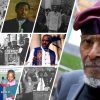By John Duda
ZSpace
There are very legitimate reasons to be scared that the proliferation of video surveillance is rapidly encroaching on our rights to everyday privacy and anonymity on the streets of Baltimore. Spurred on by counter-terrorism paranoia, recent advances in camera technology and computerized image processing are bringing George Orwell’s dystopian nightmare of inescapable social control within reach of today’s bureaucrats.
Traditionally, surveillance cameras required a human being to make sense of any visual information they captured, so that the only way a camera could produce more data than a real human observer would be through such relatively crude strategies as having a single person watch a whole bank of monitors. Often the potential for real-time control through surveillance has been abandoned in favor of merely making video recordings which could then be used at a later date to punish offenders.
This situation is rapidly changing. Through integrated sensor technology and computerized image processing, cameras are becoming more and more “intelligent”. The Baltimore police, for example, have just begun installing cameras on squad cars which automatically read license plate numbers and compare them against FBI databases and are soliciting bids to retrofit the city’s existing networks of stationary cameras with the same technology.
In Chicago, whose example Baltimore followed when installing the ‘POD’ cameras (the pole-mounted cameras in bulletproof steel casings with perpetually flashing blue lights–the acronym stands for Portable Overt Digital), many cameras have been retrofitted with acoustic sensors which attempt to detect and pinpoint the location of gunshots, and even more sophisticated cameras able to detect potentially ‘illegal’ patterns of motion (like leaving something on a street or walking in a circle) are currently being installed.
With every new technological development (and every uncritical adoption and deployment of these developments by municipal governments), the net of electronic surveillance gets cast wider and made harder to escape.
From a civil liberties standpoint, such developments are potentially disastrous. The Fourth Amendment protects against “unreasonable searches”, but in privacy cases judges interpret this as meaning that if you don’t have a “reasonable expectation of privacy” in a given situation, then you don’t have any right to privacy.
As the information which can be gathered legally under the Fourth Amendment becomes more and more easily processed by computers, we can begin to see how the implementation of “Big Brother” rests on a more or less perfectly legal foundation. Taking the example of Baltimore’s new license plate readers–it would be hard to argue that it is illegal invasion of privacy for a police officer to read your license plate, but does this mean that the police therefore have the legal right to construct a system which could track and record the location of your car at all times? The facts on the ground created by the spread of pervasive automated, artistically intelligent, and effectively networked electronic surveillance devices are transforming public spaces into potentially terrifying spaces of observation and control.
A Network of Networks
Yet one has to be careful not to think that electronic surveillance of public space, in Baltimore as well as elsewhere, is a simple matter. It’s not just that there is a network of surveillance cameras continually watching the city, but rather that there are multiple networks of cameras, each one using different technology and deployed for different reasons, forming an overlapping patchwork of different partial regimes of surveillance.
And while concerns about totalized surveillance, its destruction of privacy and potential for totalitarian abuse are valid concerns, if our only reaction to any surveillance camera is (entirely justified!) paranoia about Big Brother, we are missing a lot about what the cameras can tell us about the dynamics of public space in Baltimore.
For example, it is at the very least interesting to note that the very first network of surveillance cameras on public streets in Baltimore was the “Video Patrol” system, launched in 1996 and now consisting of 64 cameras. These cameras were installed and continue to be operated by the “Downtown Partnership” (a public/private nonprofit composed of both elements of the government and for-profit corporations), explicitly as protection for businesses operating in the area. Under the guise of public safety, formerly public space has at least in part been turned into a space where civic rights are sacrificed in favor of smoother corporate operations.
If we want to learn about the urban environment recorded in the camera’s lens, none of Baltimore’s camera networks can tell us more than the POD cameras. With their incessantly flashing blue lights, these cameras brand entire neighborhoods as criminal. While in other parts of the city, a police light might be taken to indicate an emergency, the streets monitored by these cameras have been marked as permanent emergencies, as territories distinct from the “normal” or “good” areas of the city.
Rather than addressing these territories as communities of fellow citizens, the cameras address entire blocks as potential criminals, feeding into a logic in which extraordinary regimes of policing and incarceration appear justified. The City of Baltimore has installed at least one camera which illustrates this point perfectly: a camera is equipped with a motion detector and a taped recording connected to a loudspeaker; when anyone walks past the apparatus, their picture is taken, and the recording informs them both that they are a criminal and that they have been photographed.
It’s frightening to see just how easily the optical state of emergency imposed on Baltimore’s public streets connects with the belief held by the current US government that our misadventures in counter-terrorism have somehow rendered the Constitution null and void–when asked about the privacy concerns raised by the installation of the multimillion dollar camera network installed across the downtown area in 2004, Dennis Schrader, Governor Ehrlich’s director of homeland security, simply replied “We are at war.”
Yet what do these cameras actually see? In the case of cameras deployed to combat crime (rather than to catch those elusive and phantasmagoric terrorists skulking around the light rail on Howard street), it is unlikely that serious criminals will be deterred or serious crimes will be prevented – banks are, despite extensive video surveillance, still robbed all the time! What would be interesting to see is what kind of “crimes” are actually caught by the Baltimore police on camera–what proportion of them are for relatively minor and selectively enforced offenses like “loitering” or “disorderly conduct”?
More fundamentally, isn’t the kind of incidental, everyday crime taking place on the streets in view of the cameras merely symptoms of a much larger crime, that of a system of government that at city, state, and national levels, and in collusion wi th private interests, has sought to underfund and under develop inner city communities, reinforcing institutionalized racism along the way? From this perspective, surveillance cameras appear to be merely instruments for helping to manage the crisis which spills out into the street in the form of drugs and violence, rather than to eliminate this crisis by looking at its causes.
Which camera caught the people who let the Baltimore city public schools fall apart? Where is the surveillance camera which could catch property speculators as they pro?t off vacant buildings, or institutions like Johns Hopkins when they try to steal people’s homes? Or where is the camera that can reveal who is pro?ting from the imprisonment of more than two million people in this country?
If we are interested in solutions for rebuilding our communities rather than illusory panaceas, we’re going to have to look beyond the blank stare of public surveillance.














